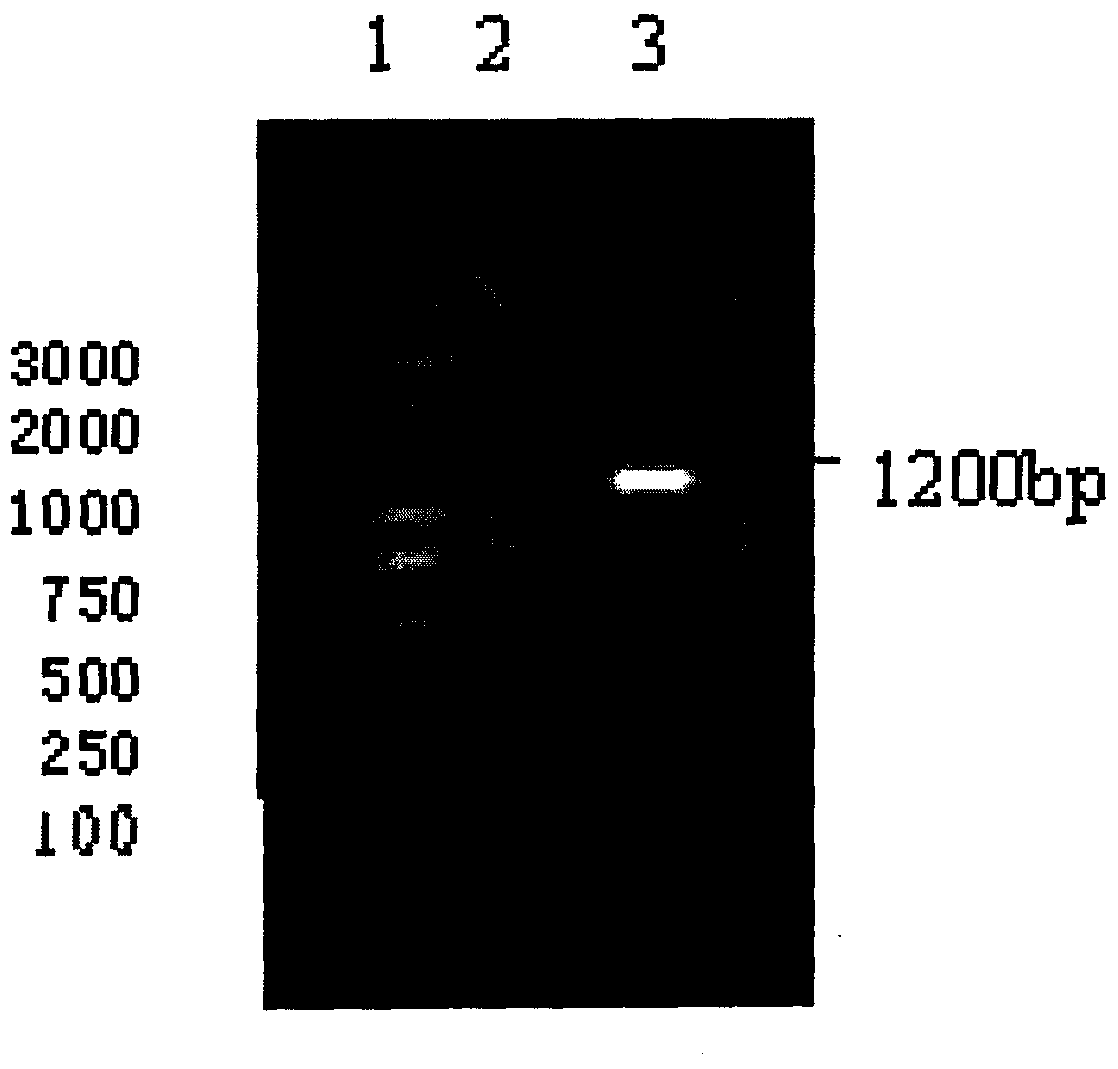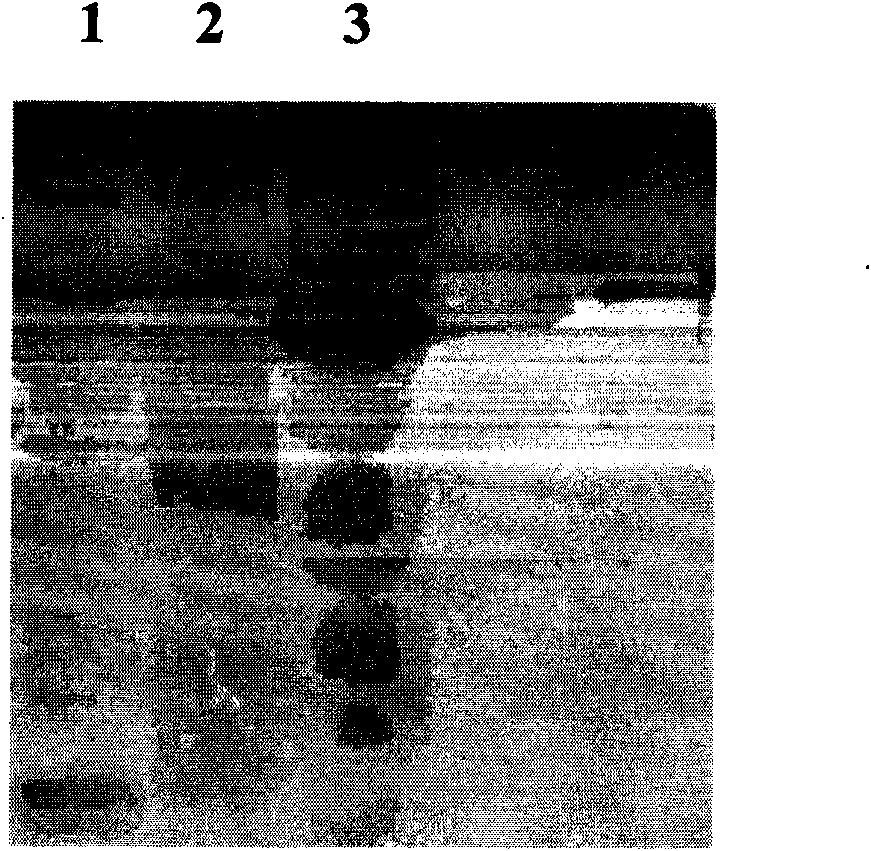Recombinant food-grade lactobacillus containing catalase genes
A technology of catalase and recombinant lactic acid bacteria, which is applied in the field of genes and food preparations, and can solve problems such as resistance to environmental stress
- Summary
- Abstract
- Description
- Claims
- Application Information
AI Technical Summary
Problems solved by technology
Method used
Image
Examples
Embodiment 1
[0030] Example 1: Construction of food-grade recombinant lactic acid bacteria containing catalase gene
[0031] ①Cultivate Escherichia coli, extract chromosomal DNA, use restriction enzyme Sau3AI for partial digestion, and separate and purify DNA fragments above 2.5kb.
[0032] ② After the E. coli plasmid pUC18 / 19 was digested with BamHI, it was ligated with T4 DNA ligase with different fragments that were partially digested with Sau3AI, and transformed into E. coli TG1 by electric shock to construct an E. coli genome library of different size fragments.
[0033] ③Brain heart infusion (BHI) containing 1% tannic acid and 150ug / ml ampicillin was selected as the culture medium. The culture medium was anaerobic at 37℃ for 2 days, and then aerobic culture at 37℃ for 24 hours. Catalase activity. As in aerobic culture, catalase can cause tannic acid degradation. Therefore, a clone that can cause tannin degradation on the culture plate is selected as a catalase-positive bacterial clone.
[...
Embodiment 2
[0056] Example 2: For the present invention, the expression of Escherichia coli CAT protein in Lactococcus lactis
[0057] ①Cultivate recombinant Lactococcus lactis in MG17 medium at 30℃ anaerobic, and measure the OD value (600nm0.5). After about 3.5 hours, use nisin to induce its expression, and collect the culture supernatant and bacteria. After the bacterial cells are ultrasonically broken, do SDS-PAGE together with the culture supernatant to observe the expression of cat gene, purchase CAT antibody, and do Western-blot detection. See the result image 3 with Figure 4 .
[0058] ②When the CAT protein appears in the recombinant lactic acid bacteria, the next step of environmental stress resistance experiment is carried out. Artificially create different physiological environments, first cultivate in an anaerobic environment for 3.5h, and then place the lactic acid bacteria in cold (4℃-0℃--20℃), hot (30℃-80℃), salt NaCl (0-500mmol) , Oxygen (add H2O20.2mmol / L) or shaking cultur...
Embodiment 3
[0061] Example 3: Detection of Catalase Activity
[0062] (a) Crush the acid bacteria and centrifuge to get the supernatant;
[0063] (b) Prepare a 10% Tween 80 solution with a buffer of phosphate (K2 HPO4+KH2PO4, 0.1 mol / L) and NaCl (2 mol / L), and mix 5 ml with 5 ml of 30% hydrogen peroxide. Separate control tube and cat tube;
[0064] (c) Add different volumes of debacterial supernatant (20, 40, 80, 160 μl) into the cat tube;
[0065] (d) Add the supernatant of lactic acid bacteria (20, 40, 80, 160, 320 μl) containing only plasmid pRV300 to the control tube in the hydrogen peroxide reaction system;
[0066] (e) Comparing the bubble generation situation, it is found that each tube added with the supernatant of the strain containing the pRV-cat expression plasmid has bubble generation, and they are all more obvious than the control tube;
[0067] (f) It is suggested that the recombinant catalase (cat) expression product has catalase activity.
PUM
 Login to View More
Login to View More Abstract
Description
Claims
Application Information
 Login to View More
Login to View More - R&D
- Intellectual Property
- Life Sciences
- Materials
- Tech Scout
- Unparalleled Data Quality
- Higher Quality Content
- 60% Fewer Hallucinations
Browse by: Latest US Patents, China's latest patents, Technical Efficacy Thesaurus, Application Domain, Technology Topic, Popular Technical Reports.
© 2025 PatSnap. All rights reserved.Legal|Privacy policy|Modern Slavery Act Transparency Statement|Sitemap|About US| Contact US: help@patsnap.com



